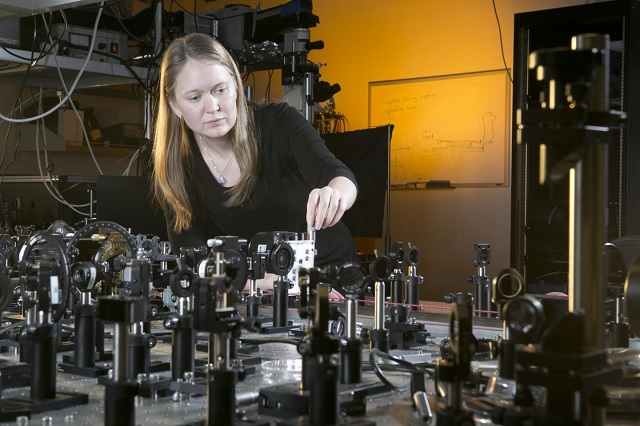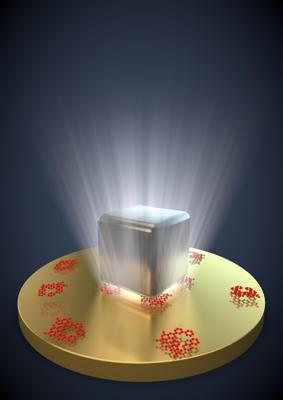
Image Credit: Duke University.
 This is an artist's representation of light trapped between a silver nanocube and a thin sheet of gold. When fluorescent molecules -- shown in red -- are trapped between the two, they emit photons up to 1,000 times faster than normal. (Credit: Gleb Akselrod, Duke University)
This is an artist's representation of light trapped between a silver nanocube and a thin sheet of gold. When fluorescent molecules -- shown in red -- are trapped between the two, they emit photons up to 1,000 times faster than normal. (Credit: Gleb Akselrod, Duke University)
Currently, switching on and off LEDs is a slow process and hence the implementation of LEDs as a source for light-based telecommunications has been limited.
Duke University engineers have improved a fluorescent molecule’s photon emission rate by placing it in a gap between a thin sheet of gold and metal nanocubes. Ultrafast LEDs are one of the applications targeted by the researchers.
The research team led by Maiken Mikkelsen fabricated 75 nanometre silver nanocubes and increased the intensity of light by trapping it between the nanocubes.
The group made use of the Purcell enhancement effect, by which the photon emission rate of fluorescent molecules can be increased by placing them near intensified light.
The researchers adjusted the resonant frequency of the gap between the gold film and nanocubes in order to find a colour of light to which the molecules were responsive.
Using computer simulations, the scientists determined the precise size of the gap required between the gold film and the nanocubes for optimized configuration. The determined gap size was 20 atoms wide.
Since many randomly aligned molecules were used in the experiment, the group hopes that the performance can be further improved. The team is aiming to design a system consisting of precisely placed individual fluorescent molecules beneath a single nanocube.
Higher fluorescence rates can be achieved by placing the fluorescent molecules on edge at the corners of the nanocube.
The study findings have been published in the journal Nature Photonics.